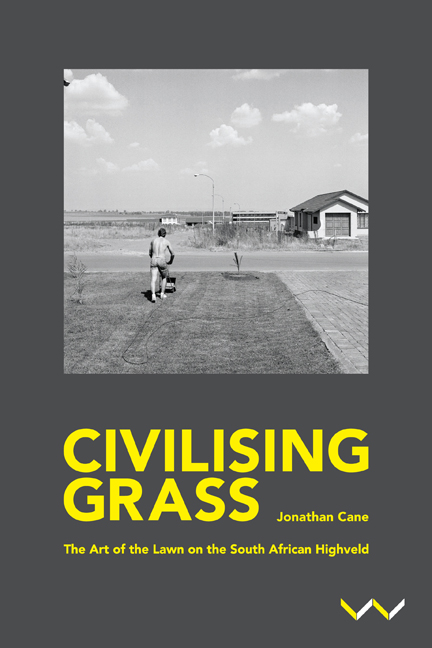4 - No Fucking up/on the Lawn
Published online by Cambridge University Press: 29 October 2019
Summary
i don't want that suburban house
i don't want a second car
a swimming pool a lawn a boring Sunday
— Wopko Jensma, i must show you my clippingsWe recognise the impossibility of landscape achieving its illusion of permanence, its claim of completion or its totalising claim on its future. This chapter is about decay, ruin, inappropriateness, incorrectness, about doing the wrong things to the lawn, with the lawn and on the lawn. It is also, perhaps, about the lawn's failure to do what it wants.
I begin with the issue of movement – not often brought to bear on the landscape itself, though it is acknowledged with regard to active subjects who move on or across the landscape. That some subjects have been and still are forbidden from moving on and across the landscape is important to note here. As a deliberate provocation (like W. J. T. Mitchell's contention that the landscape is a verb) I provide a study of Pennisetum clandestinum (kikuyu grass) to explore ways in which the immobility of the lawn is established discursively, only to be undermined.
The following notions challenge the inactivity and passivity of the lawn: (1) the underground life and movement of the grass; (2) the horizontal spreading of the grass (particularly rampant in the case of kikuyu); (3) the illegitimate uses of the lawn in relation to the fixed or ideal uses envisioned by the literature (the middle-class repose, for instance); and (4) the alienness of kikuyu, which connects it to ideas of belonging and indigeneity. The overarching point is that there is something transgressive about the lawn.
The notion of immobility points to two things. Firstly, the systems and structures that do limit access and movement, especially of black bodies, on and across the landscape/lawn; secondly, and in contrast, the provocation provided by thinking of movement on the lawn but also movement of the lawn. Lawn may be thought of as a trans-plant: moving across the world as part of a botanical exchange, and moving above and below ground as part of its biological growth pattern (the prefix trans being derived from the Latin ‘across’).
- Type
- Chapter
- Information
- Civilising GrassThe Art of the Lawn on the South African Highveld, pp. 135 - 172Publisher: Wits University PressPrint publication year: 2019



